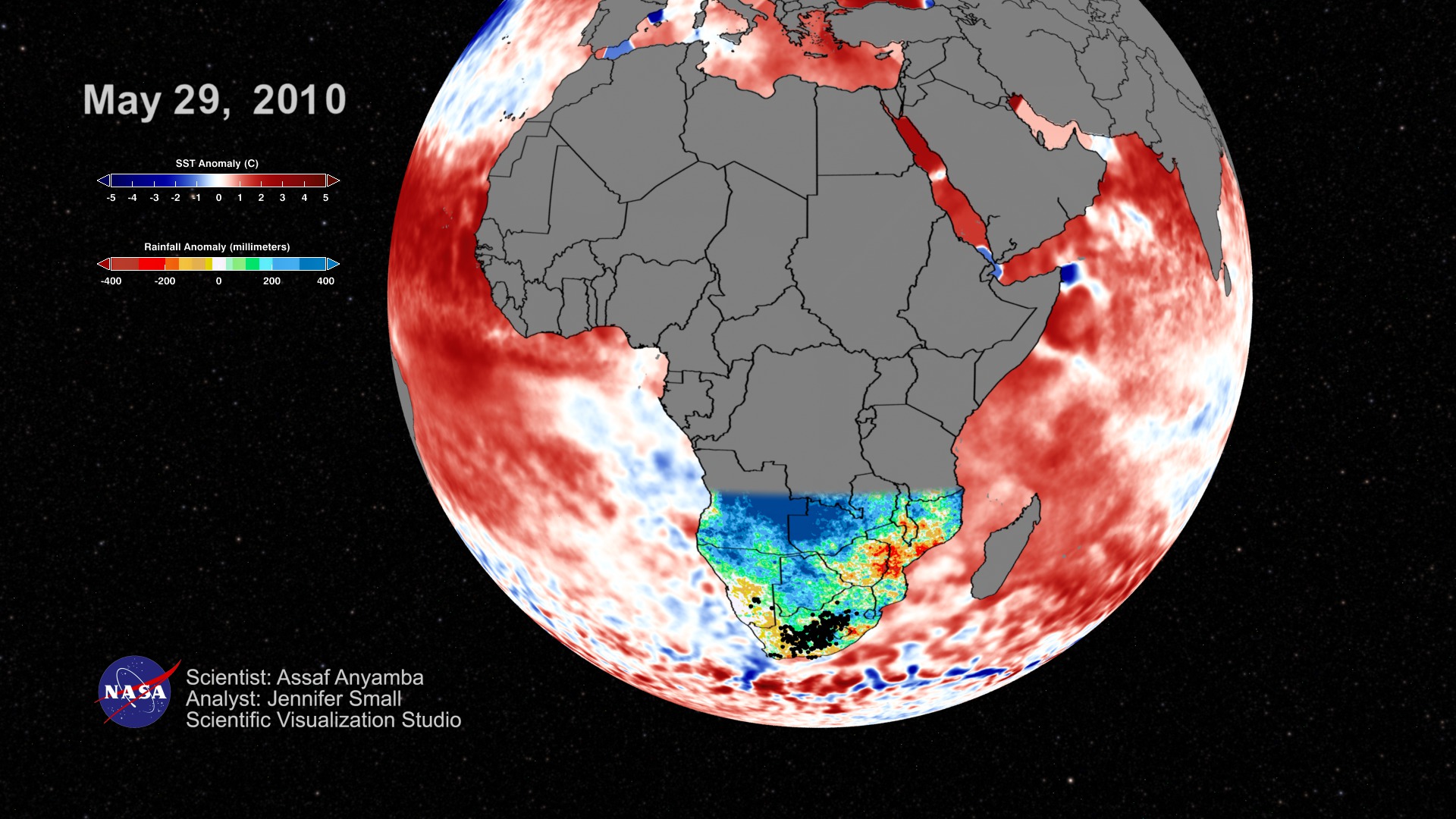Mapping Diseases
The data used are:
1. NDVI is an index that quantifies the photosynthetic capacity of vegetation. It is derived from visible and near-infrared reflectance measurements made by Advanced Very High Resolution Radiometer (AVHRR) sensors onboard NOAA's polar orbiting satellites (in this case NOAA-17). Taken as time series measurements, NDVI indicates the response of vegetation to seasonal and interannual variations in climate.
2. SST data are a blend of direct observations from ships, buoys, satellite imagery also from National Oceanic and Atmospheric Administration (NOAA) Advanced Very High Resolution Radiometer (AVHRR) instruments, and SSTs simulated by sea-ice cover. The monthly optimum interpolated fields were derived by a linear interpolation of the weekly fields to daily fields, and then averaging daily values over a month.
All anomaly fields (as shown here) are derived by subtracting the monthly values from the respective long-term monthly means.









Credits
NASA/Goddard Space Flight Center Scientific Visualization Studio
-
Animators
- Helen-Nicole Kostis (USRA)
- Greg Shirah (NASA/GSFC)
-
Scientists
- Assaf Anyamba (USRA)
- Jennifer Small (SSAI)
Release date
This page was originally published on Friday, April 13, 2012.
This page was last updated on Wednesday, May 3, 2023 at 1:53 PM EDT.
Related papers
Datasets used
-
NDVI [NOAA: AVHRR]
ID: 426 -
Sea Surface Temperature [NOAA: AVHRR]
ID: 427
Note: While we identify the data sets used on this page, we do not store any further details, nor the data sets themselves on our site.
